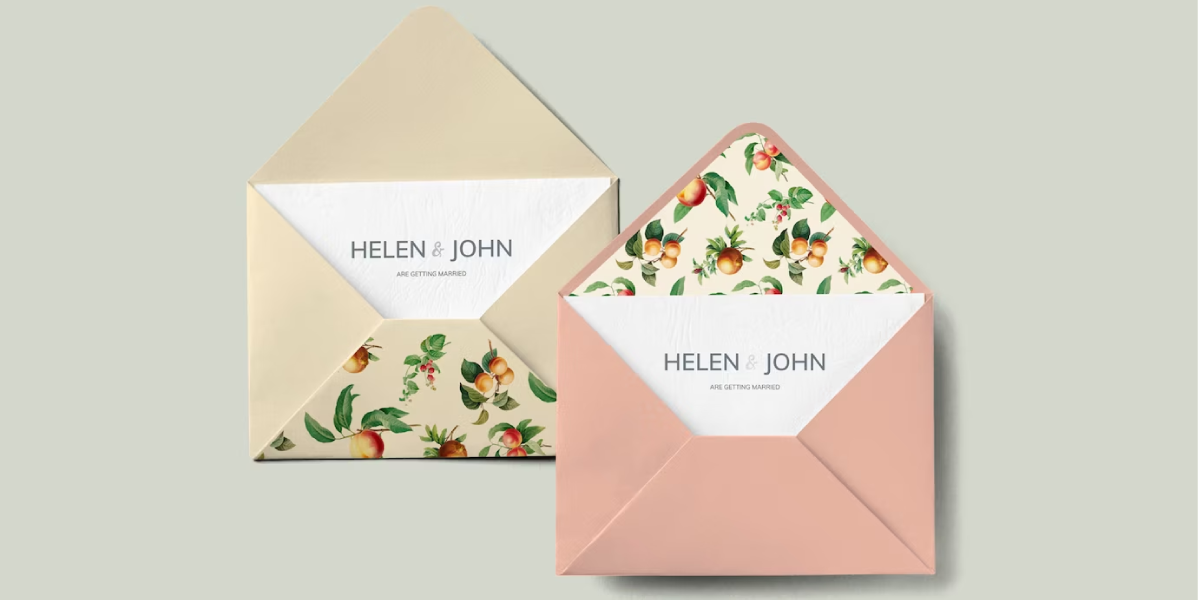Do you know your pockets from your wallets? Your banker from your straight-cut? Most people take their envelopes for granted but your choice of envelope can make a huge difference to the way that your communication is handled by the recipient.
The envelope may be the first point of contact you have with the person concerned. A quality envelope immediately catches the eye and carries a subliminal message about the importance of its contents. A quality envelope in coloured card may have an even stronger impact and help to imprint your identity.
Let’s look at some basic envelope facts…
Size and Weight
Envelopes come in all shapes and sizes. There are a number of standard sizes to accommodate A4 sheets of paper unfolded or folded into two or three, which are the most commonly used for business purposes. There’s a bit of wriggle room for you to insert your communication so they have a size description with a different prefix: C4 for an unfolded sheet, C5 for folded in half (so comfortably accommodating A5 sized inserts), and DL for an A4 sheet folded into three.
If you want your mailing to stand out from the crowd on someone’s doormat, you can use a bespoke envelope of whatever size or shape takes your fancy.
You can use a range of different paper or card stock for your envelopes. Paper and card stock is measured in grams per square meter (gsm) – the higher the ratio, the stiffer the paper or card will be and the greater protection it will offer to the contents.
Texture and Finish
The envelope surface has its own tactile message to bring to the party. Most envelopes are smooth and matt but you can use textured paper (a linen paper, for example), or perhaps have a coating to achieve a glossy finish.
Opening and Filling
Your envelope can have its opening either on its shortest side – known as a wallet – or its longest side – known as a pocket. It can be flat folded or, if additional capacity is needed, it can have gusseted sides. The shape of the flap to close your envelope can vary too: a “banker” has a V-shaped flap often used for invitations and greetings cards, or it can have a straight-cut flap, most often used for business correspondence.
Sealing
The flap of your envelope can be gummed, so you have to moisten the glue strip for it to stick, or be set up to seal itself either by a self-seal strip that binds on contact, or by a “peel and seal” strip where a tape is pulled back to reveal a sticky strip.
Sustainability
Many businesses have an environmentally sound usage policy. This can be achieved by using recycled paper/card or materials that are endorsed by the Forest Certification scheme. If you use a window for your addressee details, you may want to consider an eco-friendly film composition such as corn starch.
Making Your Envelopes Unique
There are a number of ways that you can customise your envelopes to make them stand out from the crowd.
· Colour: a coloured envelope will stand out from all the other mail received in a delivery and will pique the interest of the recipient.
· Paper quality and texture: the weight and texture of the paper or card used for your envelope will give an impression of the importance of the message it contains.
· Shape: in theory, your envelope can be any shape you like (but there may be practical limitations for filling and sealing) so use bespoke shapes to attract attention.
· Overprinting: your envelope is your first opportunity to start to build brand awareness with your colours and logo, and to deliver key messages.
· Embossing and/or foiling: these specialist haptic treatments turn your simple mail delivery container into a Rolls Royce… They are perfect for envelopes to send out your invitations or for marketing communications aimed at high net worth individuals.
Direct mailing can be an expensive process, but it remains an important part of the marketing mix for many businesses – particularly those offering high-end goods and services. It’s vital to ensure that your envelope both enhances your message and improves the chance of it being read by the intended recipient.










